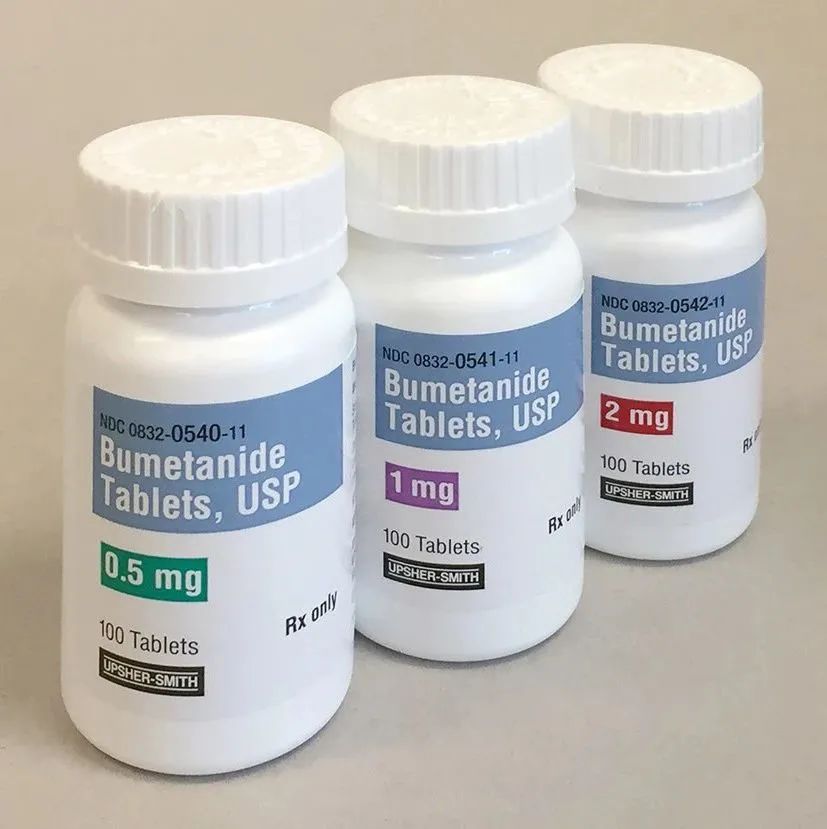Autism spectrum disorders (ASD) is an early onset and severe neurodevelopmental disorder that often leads to lifetime disability. In most cases, ASD manifests during the first 5 years of life and tends to persist into adolescence and adulthood(1). Currently, there is no cure, nor any U.S. Food and Drug Administration (FDA) approved medications to effectively treat the core symptoms in ASD. Behavioural intervention can be effective to some extent and is the currently most recommended treatment(2), but its availability is often a significant barrier in many countries(3, 4). Given ASD is affecting 1.0% of the population and costing approximately $268 to $461 billion annually in the US(5), it is urgent to develop effective and easy-accessible medications to treat its core symptoms, especially during early years when the neuronal plasticity is significant.
Bumetanide, an FDA-approved potent loop diuretic, has been recently tested for its efficiency to attenuate social symptom severity and improve emotion recognition for ASD. This compound has long been proved to be clinically safe, and has often been prescribed for the treatment of congestive heart failure, chronic renal insufficiency and nephrotic syndrome. The hypothesis is that this compound as an antagonist of sodium-potassium-chloride (Na-K-Cl) cotransporters, NKCC1, may modulate the chloride homeostasis in the ASD brain and thereby restore the relevant brain function. However, some methodological limitations of the previous clinical trials, such as the small sample sizes, the heterogeneous age groups, and the lack of placebo control, left uncertain the safety and efficacy of bumetanide for young patients with ASD(6-9). Importantly, the diuretic effect of bumetanide consists of a major challenge for the blinding design of its RCT. Including a pretreatment education session in both groups with a dietary supplementation regime, Dai et al. has minimized the potential of unblinding owing to the possible diuresis and hypokalemia induced by bumetanide. Focusing on children with ASD aged 3 to 6 years old, this perhaps the largest-to-date RCT (n=120) has shown both safety and efficacy of bumetanide for ASD.

Notably, using a state-of-art neuroimaging technique, namely magnetic resonance spectroscopy (MRS) to non-invasively monitor the neurotransmitter concentrations in the ASD brains, Dai et al. 2021 demonstrated that bumetanide changes the GABA concentration in the insular cortex and this change was associated with its treatment effect on the symptoms. These findings provide the first clinical evidence in support of the hypothesized mechanism based on animal studies, i.e. bumetanide restores the GABA functioning via modulating the chloride homeostasis(10, 11). Therefore, bumetanide may help the children with ASD, especially for those who have a disrupted GABA functioning.
However, ASD may be etiologically heterogeneous, which is reflected by the diversity of therapeutic outcomes reported in these RCTs for bumetanide. One main reason might be that the enrollment strategy was often based on symptom assessments of behaviour without any measurement for GABA functioning in the brain. Therefore, future multidisciplinary studies are warranted to confirm the clinical significance of bumetanide, and also to discover biomarkers for identifying the most-likely responders to this compound.
In short, Dai et al.'s research is very important and exciting and may provide a medical treatment option for children with ASD, especially for those without access to behavioural therapies in China and also in other countries globally.
Thiswork was an international collaboration among the Fudan University, the Xinhua Hospital Affiliated to the Shanghai Jiao Tong University, and the University of Cambridge. This work was partially supported by the Shanghai Municipal Science and Technology Major Project (No. 2018SHZDZX01).
Link to the original article: Yuan Dai+, Lingli Zhang+, Juehua Yu+, Xin Zhou, Hua He, Yiting Ji, Kai Wang, Xiujuan Du, Xin Liu, Yun Tang, Shining Deng, Christelle Langley, Wei-Guang Li, Jun Zhang, Jianfeng Feng, Barbara J. Sahakian, Qiang Luo*, Fei Li*, Improved symptoms following bumetanide treatment in children aged 3−6 years with autism spectrum disorder: a randomized, double-blind, placebo-controlled trial,Science Bulletin, Volume 66, Issue 15, 2021, Pages 1591-1598.https://doi.org/10.1016/j.scib.2021.01.008
Reference:
1. Lord C, Elsabbagh M, Baird G, Veenstra-Vanderweele J. Autism spectrum disorder. Lancet. 2018;392:508-520.
2. Schreibman L, Dawson G, Stahmer AC, Landa R, Rogers SJ, McGee GG, Kasari C, Ingersoll B, Kaiser AP, Bruinsma Y, McNerney E, Wetherby A, Halladay A. Naturalistic Developmental Behavioral Interventions: Empirically Validated Treatments for Autism Spectrum Disorder. J Autism Dev Disord. 2015;45:2411-2428.
3. Hastings RP, Robertson J, Yasamy MT. Interventions for children with pervasive developmental disorders in low and middle income countries. J Appl Res Intellect Disabil. 2012;25:119-134.
4. Salomone E, Beranova S, Bonnet-Brilhault F, Briciet Lauritsen M, Budisteanu M, Buitelaar J, Canal-Bedia R, Felhosi G, Fletcher-Watson S, Freitag C, Fuentes J, Gallagher L, Garcia Primo P, Gliga F, Gomot M, Green J, Heimann M, Jonsdottir SL, Kaale A, Kawa R, Kylliainen A, Lemcke S, Markovska-Simoska S, Marschik PB, McConachie H, Moilanen I, Muratori F, Narzisi A, Noterdaeme M, Oliveira G, Oosterling I, Pijl M, Pop-Jordanova N, Poustka L, Roeyers H, Roge B, Sinzig J, Vicente A, Warreyn P, Charman T. Use of early intervention for young children with autism spectrum disorder across Europe. Autism. 2016;20:233-249.
5. Leigh JP, Du J. Brief Report: Forecasting the Economic Burden of Autism in 2015 and 2025 in the United States. J Autism Dev Disord. 2015;45:4135-4139.
6. Du L, Shan L, Wang B, Li H, Xu Z, Staal WG, Jia F. A Pilot Study on the Combination of Applied Behavior Analysis and Bumetanide Treatment for Children with Autism. J Child Adolesc Psychopharmacol. 2015;25:585-588.
7. Lemonnier E, Ben-Ari Y. The diuretic bumetanide decreases autistic behaviour in five infants treated during 3 months with no side effects. Acta Paediatr. 2010;99:1885-1888.
8. Lemonnier E, Degrez C, Phelep M, Tyzio R, Josse F, Grandgeorge M, Hadjikhani N, Ben-Ari Y. A randomised controlled trial of bumetanide in the treatment of autism in children. Transl Psychiatry. 2012;2:e202.
9. Lemonnier E, Villeneuve N, Sonie S, Serret S, Rosier A, Roue M, Brosset P, Viellard M, Bernoux D, Rondeau S, Thummler S, Ravel D, Ben-Ari Y. Effects of bumetanide on neurobehavioral function in children and adolescents with autism spectrum disorders. Transl Psychiatry. 2017;7:e1124.
10. Tyzio R, Nardou R, Ferrari DC, Tsintsadze T, Shahrokhi A, Eftekhari S, Khalilov I, Tsintsadze V, Brouchoud C, Chazal G, Lemonnier E, Lozovaya N, Burnashev N, Ben-Ari Y. Oxytocin-mediated GABA inhibition during delivery attenuates autism pathogenesis in rodent offspring. Science. 2014;343:675-679.
11. Wang DD, Kriegstein AR. Blocking early GABA depolarization with bumetanide results in permanent alterations in cortical circuits and sensorimotor gating deficits. Cereb Cortex. 2011;21:574-587.

